European border guards have their (first) uniform
(B2) The Frontex agency has just made public the new uniform that will dress European border guards in their daily exercise. First preview
At first glance, this rather elegant uniform is reminiscent of that of the belgian federal police, by its color (dark blue), like the other elements: shape of the kepi, sticker on the back or even the three symbol bands (even if they are revisited).
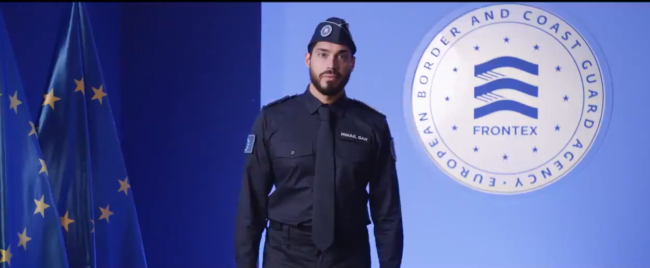
Dark blue, the complete uniform is worn with a tie of the same color, closed shirt, and an oblong kepi, with a reminder on the kepi of the logo which appears as a crest on the right sleeve.
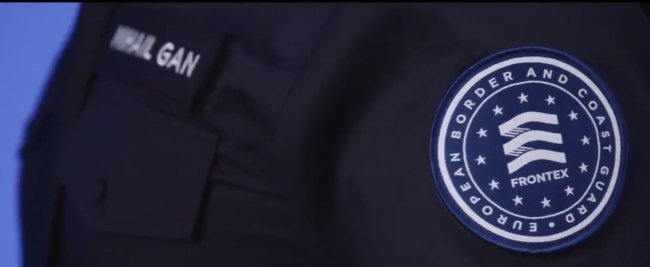
The crest chosen reflects the dark blue color, with just white to highlight it. In addition to the name (in English) of the function (European Border and Coast guard), there are three identical bands in the shape of a wave (or hill), the two highest being iridescent by four perpendicular lines. This is to illustrate the different exercise grounds of the guards (land, sea). The stars, twelve in number (like the flag of the European Union), symbol of harmony (and not of the number of members), are also in white. The original yellow color of these stars has been dropped.
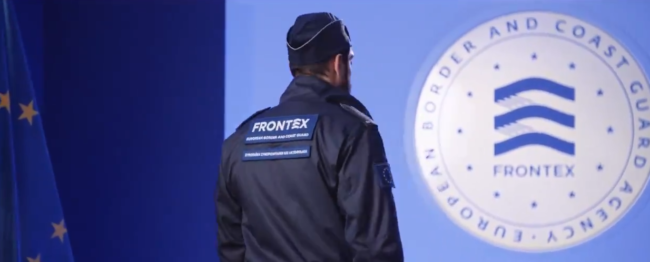
A sticker comes on the back recalling in capital letters the membership of the FRONTEX agency and the description (in English) 'European Border and Coast guard'. A second sticker (removable) completes this identification, with the translation into the language of the country of intervention (which will therefore be adapted to each operation).
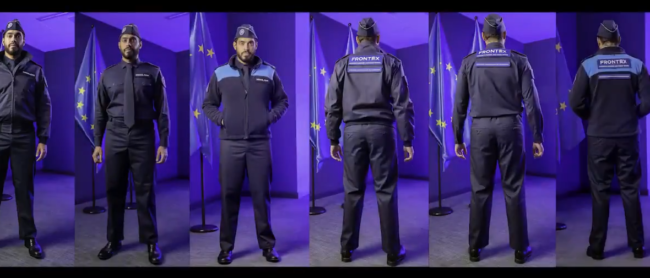
A short jacket completes the basic uniform, with a reflection in sky blue on the top of the coat, around the shoulders, reflecting normally. One can notice however that the whole of this uniform if it has a certain discretion, presents the disadvantage of not having a great visibility. The most visible colors (yellow, orange, red) are not present.
Comment: A uniform symbol of an evolution
This uniform is not just a whim of a civil servant in search of identity. It responds to a real need. Let us recall that the European Union has decided to equip itself with its own body of border guards (and coast guards). This will be partly made up of personnel seconded or reinforced by the Member States (as before). But also (and this is the great novelty), personnel recruited directly, paid by the EU, according to the statute of the European civil service, trained, instructed and subject to the European hierarchical chain.
This is the first time in the history of the EU that agents will be armed and charged with executive tasks to ensure sovereign functions at European level. An innovation whose consequences are not yet fully measured either in the Member States or at EU level. It should be noted that these forces, although subject to the European hierarchy, will not evolve completely independently. They will act within the very precise framework of the law of each Member State, at its request and within a well-defined framework, operation by operation.
(Nicolas Gros-Verheyde)
Frontex promotional video
(photo credit: Frontex (source) / B2 (selection)
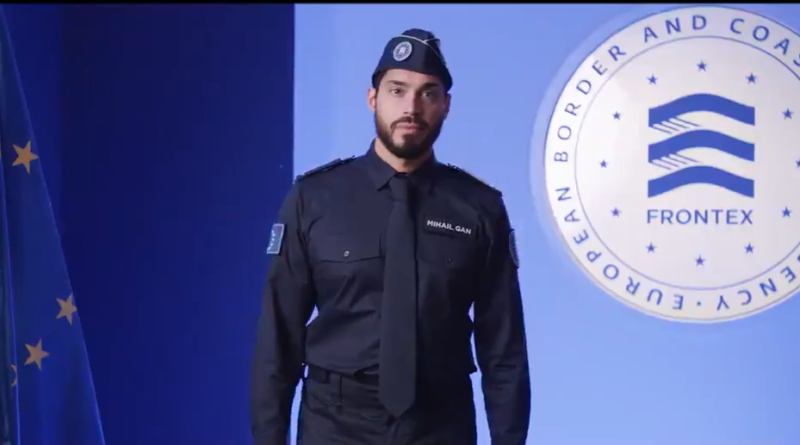

Great Britain has just left Europe and the latter continues to favor the English language, which is also that of its main economic competitor… Look for the error!
Remember that French and German are also working languages of the EU and that now they are much more widely spoken as mother tongues in the current EU than English…. We may not be able to completely do without English, but nothing prevented us from using the three languages for the name: some clothes in French, others in German, and others in English. It's just symbolic, but the symbols are strong and essential to lead to support for a project, here Europe.
The discretion of the European symbol challenges – even though this symbol alone allows the specific identification of European border guards. On the contrary, the Frontex symbol is more visible although less identifiable by the public. This gives the impression of a deliberate desire not to highlight the European identity too much. On the other hand, the distortion of the flag-symbol of the EU by the bleaching of the stars is itself debatable.